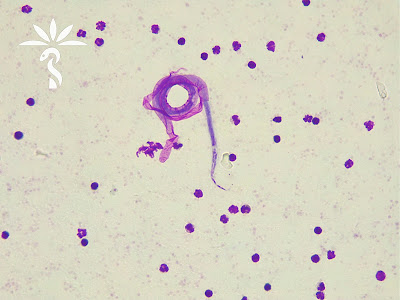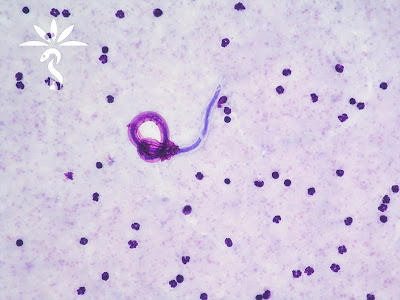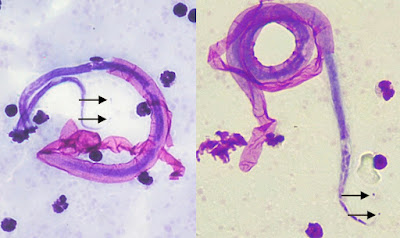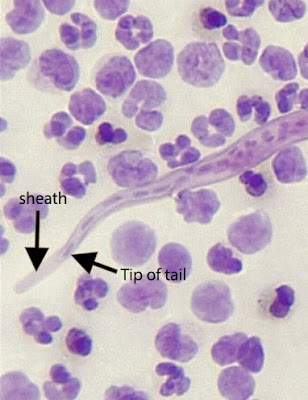Answer to the Parasite Case of the Week 743: Brugia timori microfilariae. This was one of the tougher cases, but everyone did a great job narrowing the differential to Brugia. As noted by Florida Fan and Anonymous, we can immediately rule out Mansonella species based on the small size (length and diameter) of the microfilariae. Florida Fan also notes that the sheath is visible, confirming that we are dealing with Loa loa, Wuchereria bancrofti or the Brugia genus.
He then details his method for coming to an exact diagnosis: "First the column of nuclei is so compact that we can rule out Wuchereria bancrofti, also the nuclei go to the end of the tail. Yet, the two terminal nuclei are distinctly separated from the nuclei column, this rules out any chance of being Loa loa. Now we have the Brugia genus left, but where is the pink sheath pertinent to Brugia malayi when stained with Giemsa stain? As such, we eliminate Brugia malayi. By the elimination process, we’re left with its cousin Brugia timori, the sheath of this one does not stain pink with Giemsa stain. Now let’s check the map of the lesser Sundae island, the Alor island is right North of Timor."
I will also point out that the head space is longer than that of B. malayi and there are a larger number of single-file nuclei going towards the tail. These features are more subtle and can be difficult to appreciate. I've done my best to point out some of them in the image below.
Thank you all for sticking with us on our microfilariae journey. The microfilariae can be very challenging to identify, and are rare in many parts of the world, so our lab staff may not have the opportunity to examine these organisms outside of their EQA/PT schema.





















